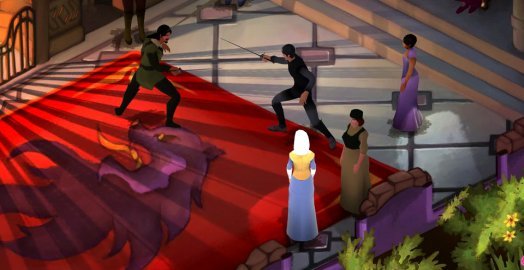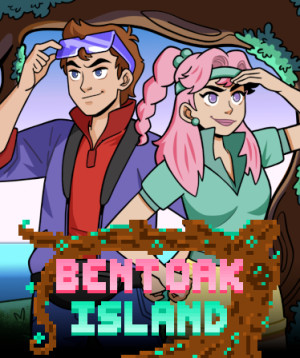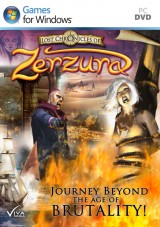Review for Elsinore

When I was in high school we studied Shakespeare all four years, starting out with the star-crossed lovers, moving on to “Et tu, Brute?” and “Out, damned spot!” and finally tackling the notoriously dark and dreary Hamlet, in which a melancholy prince rages against his mother and stepfather, questions whether life is worth living, and finds himself paralyzed by indecision. (It was fitting that we studied this play during college application season.) I went on to take two Shakespeare classes in college where I read Hamlet again, and watched the Kenneth Branagh film adaptation just for fun (two VHS tapes!), and wrote papers about the metafictional play-within-a-play and Rosencrantz and Guildenstern’s comedic interchangeability. At one point I was able to recite the entire “To be, or not to be?” soliloquy from memory.
Tl;dr: I love Shakespeare.
Perhaps not coincidentally, for much of the twenty-plus hours I spent with it, I loved Elsinore. Golden Glitch’s time-looping adventure game, set in the Danish castle where Hamlet’s drama occurs, casts you in the role of Ophelia, ex-girlfriend to the moody prince of Denmark. As in the play, Ophelia gets tangled up in the royal family’s violent squabbles despite the protective efforts of her elderly father Polonius (advisor to the king) and her older brother Laertes. Thankfully, however, Elsinore’s Ophelia is a stronger personality than the fragile, suicidal girl from the source material. She’s also a woman of color, which weaves into the story in intriguing ways.
The game opens with a brief prologue, during which Ophelia stands by while Laertes and Prince Hamlet request King Claudius’s permission to travel: the former to France, and the latter back to Wittenberg, where he has been attending school. (Two months earlier, King Hamlet died suddenly and his brother, Claudius, married Queen Gertrude and took the throne—a turn of events that has Hamlet Junior in a bit of a funk.) Laertes’s request is accepted, but Hamlet’s is denied on the grounds that he’s in serious need of an attitude adjustment. Ophelia then goes to bed and has a vivid dream involving swordplay, poison, and numerous deaths. Anyone familiar with the play—famously one of Shakespeare’s bloodiest—will recognize the foreshadowing.
She awakens at six a.m. on a Thursday morning to find Hamlet pacing her bedroom, ranting and raving about a ghost. After he runs out, Ophelia stumbles into the hallway where she’s confronted by her father, upset to have witnessed her ex-boyfriend sneaking out of her room. You’ll see this sequence dozens of times as Elsinore's complicated story unfolds, because Ophelia is destined to die. That’s no spoiler if you know Hamlet: in Act 4, Ophelia drowns after the prince’s rejection and cruelty shatter her grip on reality.
Likewise, in Elsinore, Ophelia dies two days after Hamlet’s early morning visit to her chambers, but an encounter that would have been off-stage in the play casts her supposed suicide in a new light. And her story is far from over. Ophelia again wakes at six a.m. on Thursday morning, once more shaking off her disturbing dream while Hamlet raves nearby—only this time, she’s determined to puzzle her way out of a fate that’s already written.
Although the controls are point-and-click, Elsinore's presentation is more like a Sims game than a traditional adventure, with an isometric bird’s-eye perspective and a constantly ticking clock that you can fast-forward at will. A cast of fifteen or so supporting characters mill about the castle and its grounds following their own timetables, similar to the Rennes-Le-Château guests in Gabriel Knight 3. At any given moment you might come across a conversation or activity in progress—or you might miss it altogether, if you’re in the wrong place at the wrong time.
A mini map shows where each character is presently located, with areas where something important is happening highlighted in blue. But Ophelia can’t teleport to reach them—she needs to walk or run. This, of course, takes time, and whatever’s happening might be over when she finally gets there. You can select a location or a character’s thumbnail on the map to automatically make Ophelia go to that place or person, and double-clicking to run speeds up the process, but she still has to physically traverse every screen that separates her from the desired location, which ensures that a fair amount of each time loop is spent running around.
Because it’s logistically impossible to see everything that’s going on during one playthrough, repeatedly dying and starting over is a necessary evil. During my first several attempts, I grew frustrated as I tried to do everything I thought I needed to in the short time I had. But once I accepted that death was unavoidable, I was able to relax and focus each playthrough on one or two aspects of the multi-threaded story, following different characters and subplots to see how they played out and gain a better understanding of how they fit into the whole. Elsinore is very much a game about experimentation, and its biggest strength is the multitude of “aha!” moments that come from figuring out this time what you need to try next time.
Fortunately, when you want to act on such a revelation, you don’t have to see the current time loop through to the end: a reset button allows you to start over on Day 1 whenever you want. Ophelia retains the knowledge she picked up in the aborted loop, but this way you don’t have keep going down the wrong path if you realize partway through what you should have done instead.
In addition to the royal family and Ophelia’s clan, characters include Bernardo and Marcellus of the castle guard, Hamlet’s friend and confidante Horatio, Gertrude’s lady-in-waiting Lady Brit, and Irma the cook, who has been close to Gertrude since the queen was a child. Of course, no interpretation of Hamlet is complete without Rosencrantz and Guildenstern, the bumbling comedic duo who have followed the prince home from Wittenberg—only this time they’re women. The cast is rounded out by a bartender whose presence is one of Elsinore's best in-jokes, and an enigmatic actor named Peter Quince who has arrived to put on a one-man play for the court.
This play—a reenactment of Claudius’s alleged murder of King Hamlet, intended to “catch the conscience of the king”—serves as a turning point as you learn how to manipulate its script in order to influence its audience. Quince’s performance isn’t the only such malleable event; other canonical happenings that can be altered include Polonius’s stabbing, the appearance of King Hamlet’s ghost, and the drama’s climactic duel. Tinkering with these scenarios can change the game’s outcome significantly.
There are also plot points unique to Elsinore but inspired by the source material, including the threat of Norwegian invasion and a pirate attack at sea, plus others that bring a twenty-first century sensibility to a four-hundred-year-old premise, such as a subplot that merges the Shakespearean practice of onstage gender-bending with a more contemporary take on gender fluidity. Anyone with a fondness for The Bard will delight in Elsinore's many references and Easter eggs, but those unfamiliar with the play shouldn’t worry, as everything you need to know will happen in real time, right in front of you (provided you get there in time to see it).
Some of Hamlet's famous lines make it into the game—“To be, or not to be?” and “Words, words, words!” among them—but in general, Elsinore's characters speak in a mix of formal and modern English. Except they don’t exactly speak: the dialogue is all subtitled. The game does have a voice option, but the acting is limited to one- or two-word utterances that don’t match up with the dialogue. (For example, Polonius’s line “Avoiding me, more like. Well, I’ve a favor to ask you” is accompanied by a voiced “I see!”) This again reminds me of The Sims—with no surrounding context, the speech is essentially gibberish—and I found it distracting enough to turn off.
As you untangle the game’s subplots and try to keep Ophelia alive, several tools in the user interface come in handy. Ophelia carries a journal with three sections: Leads, Characters, and Hearsay. The Leads provide a recap of what’s happened so far, divided up by story thread. These start out brief and develop as you progress, ultimately getting checked off as you see them through to the end. The Characters section provides backstory about the major and minor players, filling in as you learn new tidbits. Both of these sections flesh out the world and can provide hints for what to try next if you’re stuck, but it’s possible to play without consulting them at all.
The Hearsay section is more tightly integrated into the gameplay. This is comprised of topics Ophelia learns about, which she can then broach with various people. For example, after Polonius dies by Hamlet’s hand, Ophelia can bring up “My Father’s Murder” in subsequent playthroughs, even before it happens. By doing so, she can glean new information and potentially change Polonius’s fate.
Such conversations open up exciting possibilities early on. As the story blows open, you’ll have a number of topics to explore with each character, and many of those conversations trigger new events or new entries to the Hearsay list. But this dialogue system can also be frustratingly limiting when you’re prevented from broaching certain topics with certain characters—the topic is grayed out and unclickable, seemingly arbitrarily—or when something major happens that you want to talk about but can’t because it doesn’t have a corresponding entry on the list.
Conversations can also be problematic due to the lack of an undo button. In an early example, bringing up certain topics makes others think Ophelia is losing her marbles, which leads to an abrupt ending—but there’s no advance warning that this will be the outcome. The result can be the sudden collapse of a scenario you’ve been carefully trying to orchestrate, and since the game doesn’t remind you what happened when you previously brought up that topic with that character, if you’re not careful you might fall into the same trap in later playthroughs. (Ask me how I know this…)
The interface also gives access to a timeline that shows events that have already happened, as well as ones that are expected to occur later in the loop based on Ophelia’s current course (but could still be canceled out by her subsequent actions). These predictions can help you make sure to be in the right place at the right time, and as you attempt to orchestrate fate, the timeline can show you if your efforts are having the desired effect. A recent patch added the ability to teleport to the location of a future event from the timeline, which makes up for the lack of a quick-travel map to some extent. But since the timeline only shows events that are predicted to happen based on Ophelia’s actions in this time loop, the ability to teleport from the timeline doesn’t completely solve Elsinore's logistical problems.
Your early goal is to figure out how to avoid Ophelia’s untimely death on Saturday afternoon. Once this is achieved, your objective pivots to the larger question of why she’s caught in a time loop and how to break out of it. Ultimately the game has thirteen possible conclusions, with no one definitive ending. While this vast variety of outcomes is one of Elsinore's strengths, the clunkiness of teasing them out is a weakness. There’s so much to keep track of even with the timeline and journal at your disposal, and the more you uncover, the harder it is to find what you’ve missed. This is partly psychological—when you repeat the same actions over and over, tunnel vision inevitably develops—but I would have welcomed refinements in the game design to make uncovering all of Elsinore's secrets less of a chore.
Ironically, my pursuit of a satisfying conclusion only started to feel like a hassle once I realized what the constraints were. Well into the game, Ophelia gains access to a book that lays out, in vague terms, eleven of the possible endings. This establishes how much can be achieved but provides no guidance for doing so. As I exhausted Elsinore's options—continually falling into the same scenarios I’d already experienced rather than discovering new ones—my earlier frustration returned, this time caused by the repetition required to squeeze out new content.
But because the book made me privy to how many endings remained to be unlocked, I felt like I had to keep playing. Elsinore's relentless clock has no rewind feature, so the only options if you just miss something are to play through to the end of the loop anyway, or to abruptly start the cycle over. Either way, you have to replay to the point where you messed up before you can try again. (There are no discrete save slots, only an auto-save.) The forced forward momentum that had driven me to explore and experiment early on grew tedious as I bumped up against the story’s outer limits. After taking a break for several weeks, I pressed on and did ultimately see all of the endings, but that was more out of a compulsive fear of missing out than for the pleasure of discovery.
My disappointment was compounded by the way the book of endings functions. As you play different storylines through to their conclusions, the book’s entries fill in. You can then choose to keep exploring or to finish off one of the narrative threads—but if you do the latter, your saved game gets erased. After viewing a short epilogue associated with that particular ending, you’ll be forced to replay not just from the beginning of a loop, but from the very beginning of the game if you want to try another path. I worked around this by backing up my saved game and restoring it twelve times as I cycled through the epilogues—a manual process that enabled me to see most of what the game had to offer, but that felt more like a cheat than a win.
The other letdown is Elsinore's production values. The hand-painted graphics and animations are simple—understandably for a Kickstarted game with a small team and small budget, but still a detraction from an otherwise ambitious adventure. And a slew of little bugs and polish issues pulled me out of the experience: characters hovering in space where a dinner table and chairs should have been, an endless loop of Ophelia running across the threshold of two screens that could only be broken by force-quitting, apparent placeholder text where I had seen real text in earlier playthroughs, conflicts between timed events resulting in jarring conversations between missing characters. One scene in particular, where Ophelia walks on water when she’s supposed to be swimming, really sullied what was supposed to be a climactic moment. (Note: A patch applied after I started playing may have fixed some of these issues.)
Even with its rough edges, I heartily recommend Elsinore to Shakespeare fans and anyone who likes story-heavy games. There are no real puzzles, beyond figuring out what to say to whom and where on the map to go at which times and in what order—but considering the plot’s layered complexity, this is quite enough. Even when you’re not making progress toward Ophelia’s ultimate goals, there are a lot of funny and surprising moments to be discovered, unexpected twists involving characters you thought you knew, and creative interpretations of centuries-old canon.
When I said earlier that I love Shakespeare, that wasn’t the whole truth. Let’s be real: I probably wouldn’t have read Hamlet multiple times if I wasn’t being graded for it. Half the time I didn’t even know what the characters were talking about. What I love about Shakespeare is how it can be reinterpreted through the ages, how every staging puts a new spin on an age-old story. And that’s what I love about Elsinore, too. It gave me a new appreciation for a story I thought I already understood—as any good Shakespearean production should.
WHERE CAN I DOWNLOAD Elsinore
Elsinore is available at:
We get a small commission from any game you buy through these links (except Steam).Our Verdict:
To play, or not to play? If you like Shakespeare, definitely. But even if you dozed through high school English, the clever premise and time-loop puzzling make Elsinore a world worth exploring.

































